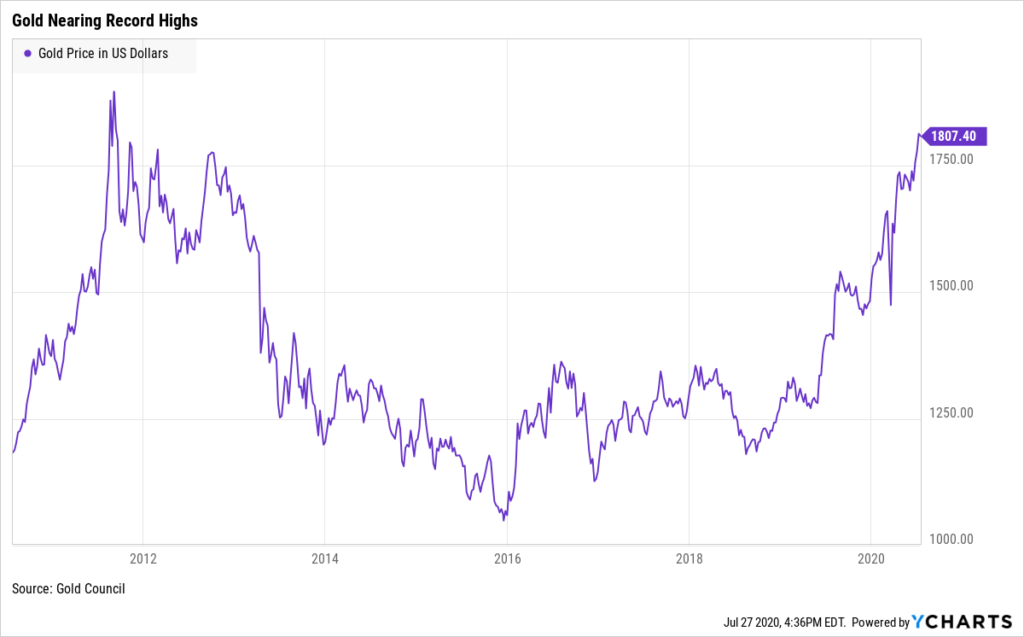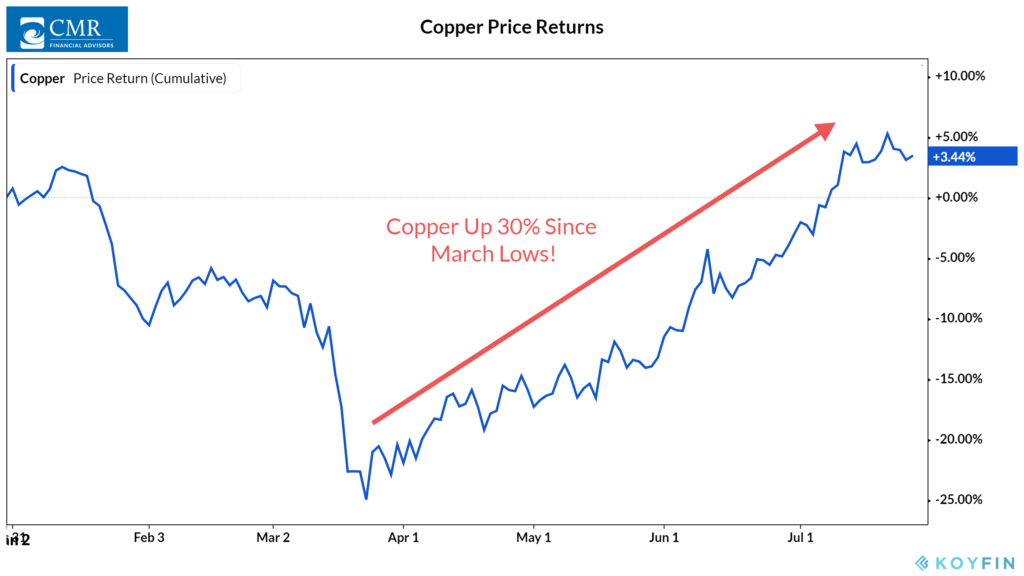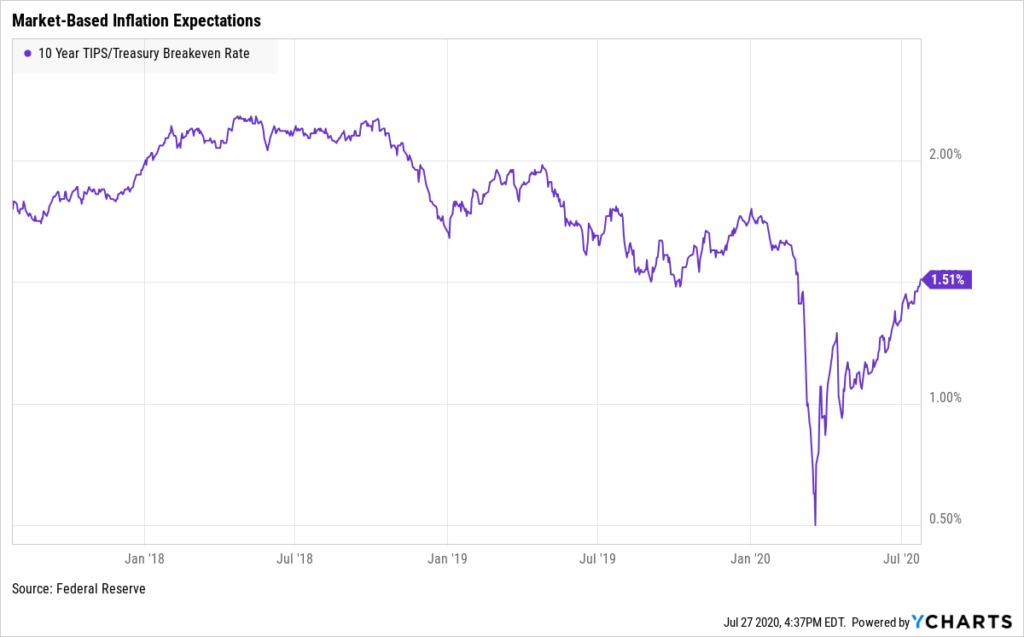OVERVIEW
The U.S. stock market moved lower last week, with the S&P 500 index falling 0.28 percent and the Nasdaq Composite sinking 1.33 percent.
The technology and communication services sectors led the market to the downside.
As for the gainers, energy, consumer discretionary, and financials yielded positive weekly gains.
The international markets did well, as both developed and emerging market stocks gained around half a percent.
Most bonds did quite well for the week, with some of the biggest gains coming from long-term Treasuries and high-yield bonds.
The U.S. dollar weakened substantially, which helped boost commodity prices.
Gold rose nearly five percent, and oil was up over a percent for the week.
Real estate, however, dropped about 0.6 percent.
KEY CONSIDERATIONS
All That Glitters – The Covid-19 pandemic has upturned the world in many ways, but the way it has affected the prices of gold and copper is particularly striking.
Broadly speaking, the prices of these two metals move in opposite directions. Gold is widely viewed as a safe-haven asset, so in times of economic distress, investors clamber to it for safety.
Copper, on the other hand, is the exact opposite. Because it is a key industrial metal used in manufacturing and construction, it tends to do well when the economy is poised to accelerate.
Enter the unusual year of 2020. Gold has risen sharply since the end of 2018 and is now nearing its record peak set in 2011. Some market experts think it could top $2,000 an ounce this year or next.

At the same time, the price of copper has shot up more than 30 percent since the depths of March on the back of increased demand from China. Plus, the recently announced stimulus coming out of Europe could also boost the demand for copper in countries outside China.

One explanation for the gold rally is the unprecedented monetary and fiscal stimulus that has boosted inflation expectations. The traditional view is that as inflation erodes the purchasing power of fiat money, gold will retain its value.
Indeed, investors have poured capital into inflation-linked Treasuries (also known as TIPS) at a record pace this year. The resulting market-based measure of expected inflation has risen rapidly from the March lows.

From an economic standpoint, we would like to see copper’s rally continue, as it would signal stronger global economic growth.
However, with the virus still ravaging many countries, a renewed increase in infections could further depress demand for copper-dependent goods, thus throwing the economic recovery further off track.
Maybe gold’s rally will be more persistent.
However, the idea that gold is a good hedge against inflation doesn’t hold up to reality. After adjusting for inflation, gold has underperformed stocks, bonds, and even cash since the 1980s.
Instead, it is high debt levels, a weakening dollar, and low interest rates that are the likely reasons for the outsized gains in gold.
In the end, it will be interesting to see which (if either) metal falters first, as that will likely have implications for investors in the months and years to come.
This is intended for informational purposes only and should not be used as the primary basis for an investment decision. Consult an advisor for your personal situation.
Indices mentioned are unmanaged, do not incur fees, and cannot be invested into directly.
Past performance does not guarantee future results.
The post All That Glitters first appeared on NelsonCorp.com.